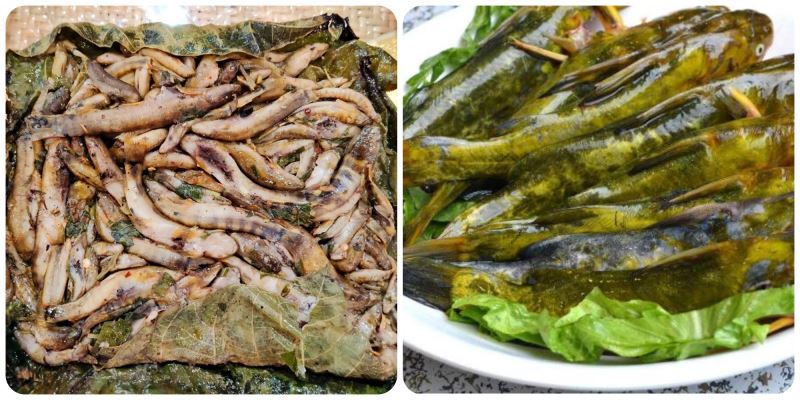Cá Bống Vùi Tro
Origin and Cultural Background
Cá bống vùi tro is a traditional dish from the highlands of Vietnam, particularly Lai Châu and other Northwestern regions. The dish is famous for its rustic preparation method, where fish are cooked by being buried in hot ash. The use of ash to cook food is an ancient technique, passed down through generations, especially among the Thái and Mông ethnic communities.
This dish is a delicacy and is often served during festivals, family gatherings, or special occasions, reflecting the connection between the people and their natural environment.
What is Cá Bống?
Cá bống refers to a small, freshwater fish that is typically found in the mountain streams of Lai Châu. Known for its delicate texture and mild flavor, cá bống is considered a local delicacy, often caught by hand from the clear, cold streams of the region.
The fish is naturally sweet and tender, making it an ideal candidate for the unique cooking method of being buried in hot ash.
Preparation and Cooking Method
The preparation of cá bống vùi tro involves several steps that highlight the simplicity and natural flavors of the dish:
-
Cleaning the Fish: The fish are thoroughly cleaned and gutted. No seasoning is needed, as the goal is to preserve the natural taste of the fish.
-
Wrapping in Banana Leaves: The fish is then wrapped in banana leaves, which helps to lock in moisture and aroma during the cooking process.
-
Burying in Ash: The wrapped fish is placed in hot ash, typically from a wood fire, where it is left to cook slowly. The ash imparts a subtle smokiness, while the heat from the embers cooks the fish evenly without direct flame contact.
-
Cooking Time: The fish is typically left in the ash for 30 to 45 minutes, depending on the size of the fish and the heat of the embers.
This cooking method allows the fish to retain its juiciness and delicate flavor, while being infused with a hint of smokiness from the hot ash.
How to Enjoy It
Once cooked, cá bống vùi tro is ready to be served:
-
The fish is carefully unwrapped from the banana leaves and presented on the plate.
-
The fish has a smoky aroma, with a moist, tender texture and a natural sweetness.
-
It is commonly served with sticky rice (xôi nếp) and accompanied by chẳm chéo (a traditional Thái dipping sauce made with chili, garlic, and wild peppercorns).
The smokiness and tenderness of the fish pair perfectly with the aromatic rice and the flavorful dipping sauce, creating a satisfying and unique meal.
Where to Find It
-
Local markets and restaurants in Lai Châu and surrounding regions.
-
Home-cooked during family gatherings or special events in the villages.
This dish is rarely found outside the region, making it a true local specialty that reflects the cultural and culinary traditions of the mountain people.
Why You Should Try It
Cá bống vùi tro is not just about food; it’s about experiencing traditional cooking methods that connect people to nature and the land. The smoky flavor and tender texture of the fish are a testament to the resourcefulness and wisdom of the local communities, who have mastered the art of cooking with the materials and ingredients they have at hand.
For those seeking an authentic culinary adventure, cá bống vùi tro offers a unique taste of Vietnam’s highland heritage, a dish that brings you closer to the earth and its natural flavors.


